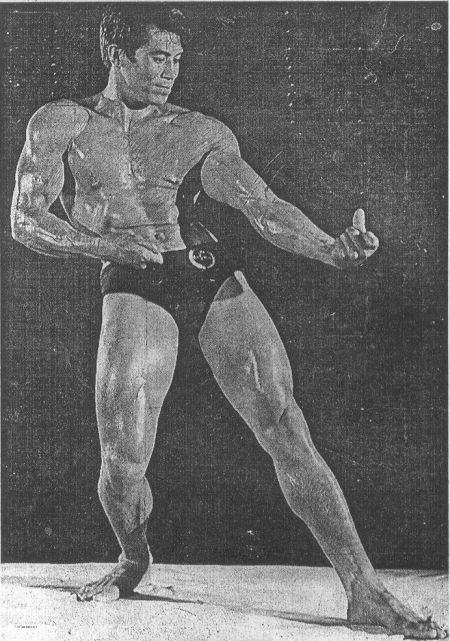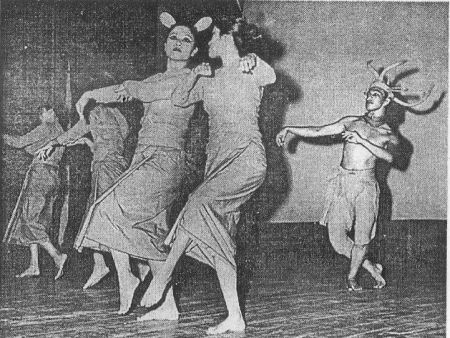SHORT AND DOCUMENTARY FILMS IN MANIPUR
Part 1 - 1970-1989
Salam Rajesh *
Introduction
Short and documentary films in Manipur, limited in number as of date, do have a place in the Manipuri social progress, having recorded valuable information of the contemporary and current events on the one hand and on the other, as having had documented important aspects of the cultural and customary life, tradition and heritage of the Meiteis in the Imphal valley and of the tribal communities in the hills of Manipur.
Progressing from black & white to colour, with formats in 16mm and 35mm, the non-feature films had edged in to win recognition in the national and international fora for their contributions in projecting as well as popularising the different facets of the Manipuri life and the hitherto unknown facts of Manipur's rich heritage.
The Documentary Films
A listing of the documentary films produced till date with the available data of each film, limited in many cases, is given here in yearwise sequence.
In 1971
As per the records, the first Manipuri documentary film to be ever screened publicly was MAIPAK, SON OF MANIPUR in 1971. The film was shown on November 9 that year at the Pratap Talkies. The film in 35mm black & white was produced by K.T.Films Private Limited, a banner floated by Karam Monomohan - a pioneering film producer in Manipur, and it was directed by Debkumar Bose from Calcutta. Duration of the film is 10 minutes and the medium is in both Man\puri(Meiteilon) and English.

"Mr Maipaksana"
The film took up as its subject the achievement of Nongthombam Maipak Singh who clinched the prestigious title of Mr. India in 1970 and who also participated in the Mr. Universe contest organised by the International Federation of Body Builders at Paris in 1971. The film was shot at Calcutta on Maipak's return to the city after the Mr. Universe contest. The film captured the extra-ordinary physique of Manipur's famous and handsome muscleman for posterity.
In 1972
K.T. Films Private Limited produced three short 35mm B&W documentaries in 1972. These were mainly recordings of government sponsored state functions in connection with particular events. The films include (a) Statehood Day Celebration of January 21 in 1972 (b) Plan Exhibition of 1972, and (c) Republic Day Celebration of January 26 in 1972.
Duration of the films are 10 minutes each. All the films are directed by Debkumar Bose. These documentary films were screened publicly on April 9 in 1972, on the same day of screening the inaugural show of the first Manipuri feature film Matamgi Manipur.
In 1977
ballet unit of the Jawaharlal Nehru Manipur Dance Academy, Imphal. The film was shot at the Kalinga Studio in Orissa. All the artistes involved in the ballet went there for the shooting. Having a duration of 46 minutes, the film is in 16mm colour. The film has no commentary. It is subtitled in English.
The film bagged five Merit Awards in the 12th Annual International Wildlife Film Festival at Missoula, Montana in the U.S.A. in 1989. The awards were given for (i) Presentation of the Inter-relationships Between Animals and Humans, (ii) Artistic Excellence in Choreography,
(iii) Interpretation of an Animal's Spirit, (iv) Delicate Depiction of Wildlife, and (v) Honorable Mention for Fostering Cultural Perspectives of Conservation.
The film also participated in the London Film Festival and in the Bombay International Film Festival in 1989. The film was declared OUTSTANDING FILM OF THE YEAR 1989 by the British Film Institute, London.

Ballet Unit of JN Dance Academy
b) A second film produced in this year is the KEIBUL LAMJAO NATIONAL PARK, directed by Aribam Syam Sharma and produced for the Forest Department, Government of Manipur. The film is a personal endeavour of the then Chief Wildlife Warden, Sh.Tomchou. The film is based on the salient features of the internationally re-known floating park at Keibul Lamjao in Bishenpur district of Manipur.
A special focus has been laid on the Sangai (Cervus eldi eldi), the rare and endangered brow-antlered deer. The film is shot in 35 mm colour with commentary in Manipuri (Meiteilon). The duration of the film is 30 minutes. Camera is by Girish Padhiar, audiography by A. Shantimo Sharma, and edited by Ujjal Nandy.
The film bagged the State Award for the Best Documentary Film in the second Manipur State Film Festival in 1994.
c) A third film produced in this year is KORO KOSII, directed by Aribam Syam Sharma and produced for the Manipur Film Development Corporation Limited, a government of Manipur undertaking. The film highlights the essence of the traditional village-gate erecting ceremony of the Mao tribe in northern Manipur.
The associated ritual of pulling and erecting the village-gate has been captured in detail. The scipt is written by Laifungbam
Debabrata Roy. Narration is by N.Vishwanathan, camera by K.Ibohal and Ph.Sharatchandra, and audiography by A.Shantimo Sharma. The
film is shot in 35mm colour and has commentary in English. Duration of the film is 22 minutes.
Of the recognitions achieved by the film, mention may be made of its participation in the Indian Panorama section of the
International Film Festival of India at Calcutta in 1989. The film also participated in the Indian Film Week held at Hungary in 1989
and in the Bombay International Film Festival in 1989.
The Department of Information & Public Relations, Government of Manipur produced two short documentary films in this year. The films are (a) TOWARDS A BETTER LIFE and (b) 20-POINT ECONOMIC PROGRAMME. Both the films are directed by Aribam Syam Sharma. Having duration of 10 minutes each, the films are shot in 35mm B&W.
In 1980
a) The film SANALEIBAK MANIPUR, was produced in this year by the Directorate of Information & Public Relations, Government of Manipur. The film is directed by Aribam Syam Sharma. The film is shot in 35mm colour. Covering a duration of 30 minutes, the film is in Manipuri (Meiteilon) medium. The film has as its subject general aspects of the state, with reports on the governmental development programmes.
The film bagged the State Award for the Best Documentary film in the non-feature category of the first Manipur State Film Festival in 1984.
b) The Department of Information & Public Relations, Government of Manipur also produced two other short documentary films, namely (i) Manipur News '79 and (ii) Manipur News ' 80-81. The films are recordings of current events in the particular years, and they are directed by M.A.Singh. Having duration of 10 minutes each, the films are shot in 35mm B&W.
In 1984
a) Heisnam Kanhailal, well-known theatre director of the Kalakshetra Manipur produced on celluloid the film PEBET which is based on his play by the same name. The story of the play is based on a popular Manipuri folktale. The film is directed by Lokendra Arambam, another well-known theatre personality. The film is in 35mm colour with a duration of 35 minutes.
The film was judged the Best Film in the non-fiction section of the International Short Film Festival held at Calcutta in 1985. The film also participated in the non-feature category of the Indian Panorama section of the International Film Festival of India in 1985.
b) A second film produced in this year is TALES OF COURAGE. The film deals with the freedom movement in Manipur, emphasising on the contributions of the Manipuri women in resisting the British rule in Manipur. The essence and importance of the Nupilal (Women's War) is highlighted in this film. The film also narrates the role of the Indian National Army, INA in its struggle against the British rulers.
The film is produced by the Films Division of India, and is directed by Aribam Syam Sharma. Having a duration of 30 minutes, the medium of the film is in English. The film is shot in 35mm colour.
In 1988
a) The film SANGAI-DANCING DEER OF MANIPUR, directed by Aribam Syam Sharma and produced for the Sangeet Natak Akademi, New Delhi, is based on the ballet Keibul Lamjao written by M.K.Binodini Devi and performed by the
In 1989
a) The film THE DEER ON THE LAKE, directed by Aribam Syam Sharma and produced for the Indian National Trust for Art & Cultural Heritage (INTACH), New Delhi takes up theme on the endangered brow-antlered deer Sangai. The film goes in length to reason the changing environment in Keibul Lamjao, the habitat of the Sangai, and the consequent threat to the survival of the deer species. The film is in 16mm colour with commentary in English. Duration of film is 25 minutes.
The film bagged the National Award for Best Environment/Conservation/ Preservation Film in 1990. The film also bagged Merit Award for Portrayal Of An Endangered Species in the 12th Annual International Wildlife Film Festival at Missoula, Montana in the U.S.A. in 1989.
b) The film TOTANGKAM, directed by Sanakhya Ibotombi and produced by the Avant Garde, a theatrical society based in Imphal, takes up theme on the ritualistic festival of a particular tribe in Manipur. The film is in 16mm colour with commentary in English. Duration of the film is 20 minutes.
